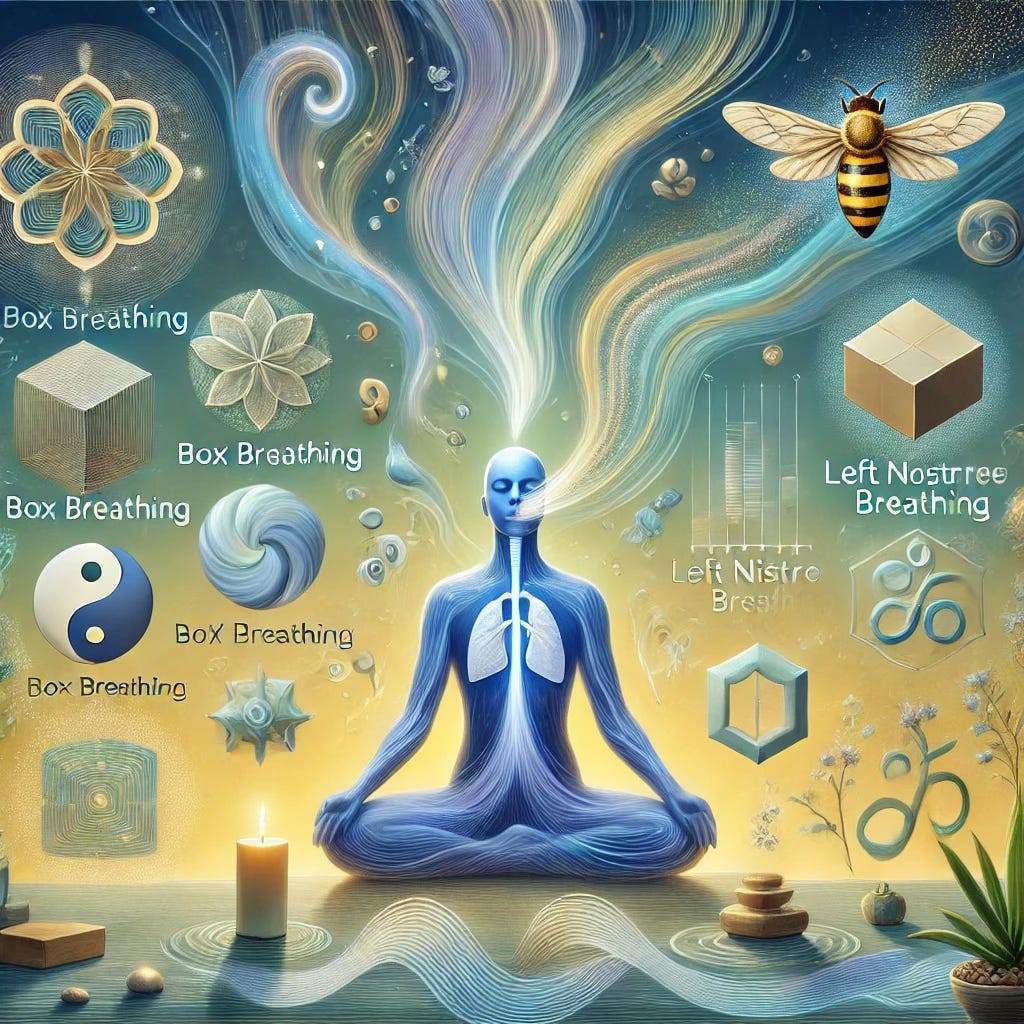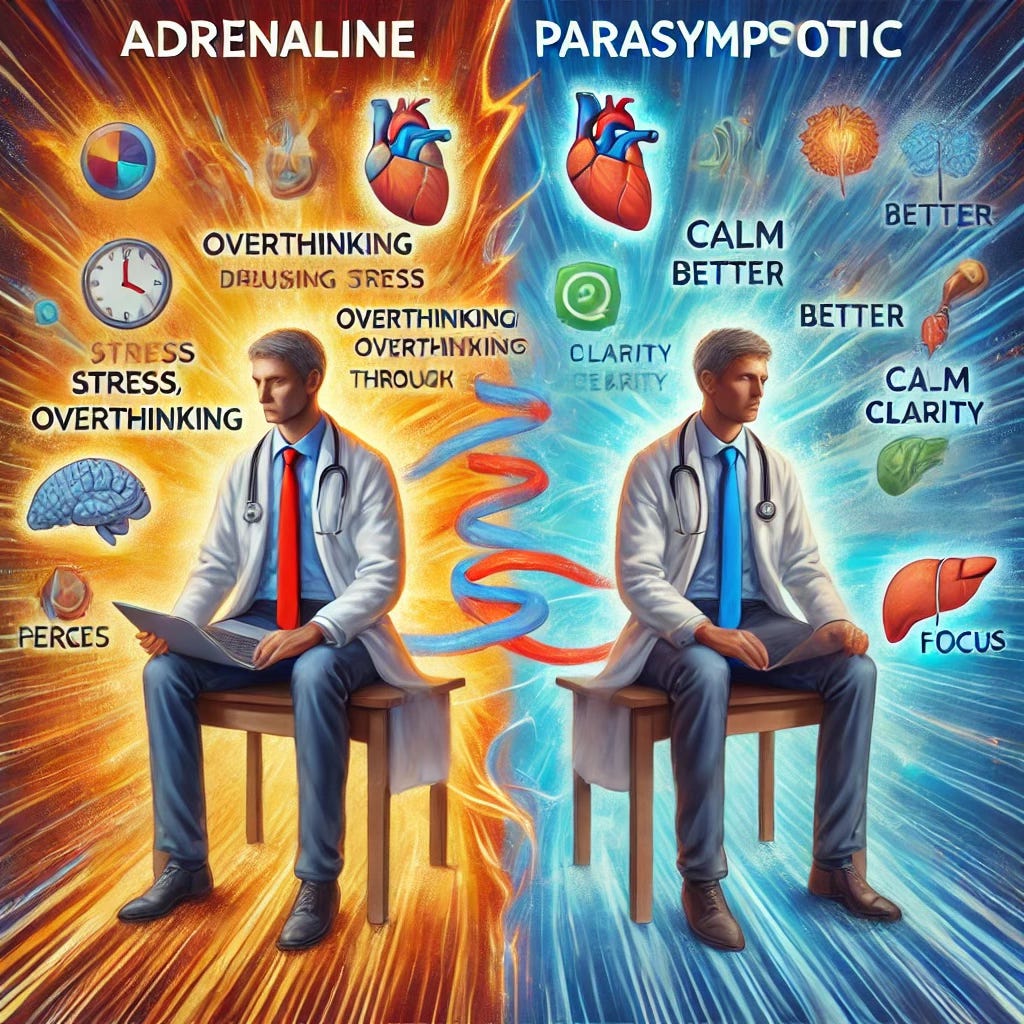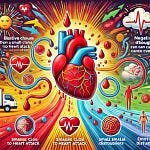As human beings, we've evolved far beyond the survival instincts of our caveman ancestors. Back then, the constant need for survival meant that our sympathetic 'fight or flight' system was in overdrive. We had to stay alert to hunt for food, defend ourselves, and survive. But as our environment has evolved, so have our needs.
As a doctor, especially after completing my MBBS, I don’t think any of us are struggling for survival in the same way. Our basic needs are met. What we now need more than anything is to be mentally fit—capable of handling cognitive challenges with sharp focus and clarity.
In today’s blog, I want to share how this realization hit home for me and why the shift from an adrenaline-driven life to mastering the parasympathetic zone can make all the difference.
Addicted to the Rush: The Pitfalls of Relying on Adrenaline
During my MBBS days, I was like many students—I waited for that 'exam fever' to kick in. I relied on the adrenaline rush to power through study sessions. And, like many, I managed to scrape through with decent grades. But the cost? I’d either gain or lose weight, my hair would fall out from the stress, and I’d experience crippling anxiety. Yet, I kept relying on that sympathetic adrenaline-driven push because it gave me short-term results.
One of my mentors recently reminded me of something profound: Addiction is anything that gives you short-term pleasure but long-term harm. And in this sense, the adrenaline rush I relied on became an addiction. It was a cycle—a vicious one at that. Society might warn us about smoking or drinking, but no one talks about the adrenaline rush addiction that many of us fall into during moments of high stress.
From Sprint to Marathon: Why Adrenaline Fails in the Long Run
"As I moved on to prepare for competitive exams like NEET, things changed. This wasn’t a sprint like my MBBS exams. It was a marathon—a long, steady grind that required resilience and focus. The adrenaline-driven rush didn’t work here. In fact, it became a dangerous strategy that led to mental exhaustion and burnout.
The real change came when I learned to shift into the parasympathetic zone. This is the part of our nervous system that calms us down, allowing us to recover, focus, and think clearly. When I started practicing techniques to activate this system—especially breathwork like box breathing—I found that I performed far better. My focus improved, my memory sharpened, and the need for constant revision decreased. Everything I learned in that calm, focused state stayed with me longer."
Chaos vs. Calm: The ICU in Sympathetic Overdrive
"The contrast between the sympathetic and parasympathetic zones isn’t just something I experienced during exams. It’s something I witness every day in the ICU. There have been moments where I performed the same procedure under two very different conditions—one where I was calm, steady, and in control, and the other where I was hurried and rushing to get things done.
The difference? One approach is clumsy, while the other is picture-perfect. Both get results, but the quality of those results and the emotional toll are worlds apart."
Finding Your Flow: How to Master the Parasympathetic Zone
"One of the most powerful realizations I’ve had is that the key to peak performance is not pushing harder but rather activating a state of calm awareness. In fact, this idea aligns perfectly with ancient yogic practices, which I’ve begun to explore more deeply. Yoga teaches that the breath is the gateway to mastering the mind, and in modern terms, that’s how we activate the parasympathetic system.
Here are some ways to get started:
1. Box Breathing:
A simple yet effective technique where you breathe in for 4 seconds, hold for 4, exhale for 4, and hold again for 4. This technique is incredibly grounding and is my go-to during high-stress situations.
2. Bhramari Breathing (Bee Breath):
A traditional yogic practice that uses humming to activate the parasympathetic nervous system. It’s calming and helps to release tension in the mind and body.
3. Left Nostril Breathing:
Another yogic technique that directly activates the parasympathetic zone. Close your right nostril and breathe only through your left for several minutes—this brings an immediate sense of calm.
4. Mindful Awareness of Breath:
Simply being aware of your breath, noticing its natural rhythm, and bringing attention to the present moment can help shift your nervous system into a calmer state."
Breaking the Addiction: Introspect on Your Own Triggers
"We often think of addiction in terms of substances like smoking or alcohol, but there are deeper, more subtle addictions we fall into—like the addiction to adrenaline. It’s the habit of relying on that rush to push through, even when it harms us in the long term.
Today, I encourage you to introspect: What are your adrenaline-driven habits? Whether it’s stress eating, overthinking, or rushing through tasks, take a moment to become aware of these patterns. The first step to breaking this cycle is awareness, and the next is to activate your parasympathetic system.
I’ve realized that when I’m in that calm, aware state, my performance—whether in exams or the ICU—is ten times better. And that’s the first step to mastering your own peak performance."
As we wrap up, I invite you to take a moment to reflect on your own life. Are you relying on the quick fixes of adrenaline, or are you creating space for calm and focus?
Thank you for joining me on today’s introspective journey on The Superdoc Insights.
Stay balanced, stay healthy, and remember—true performance starts with mastering your inner calm."
Dr.Krishna Bharath ,MD



















Share this post